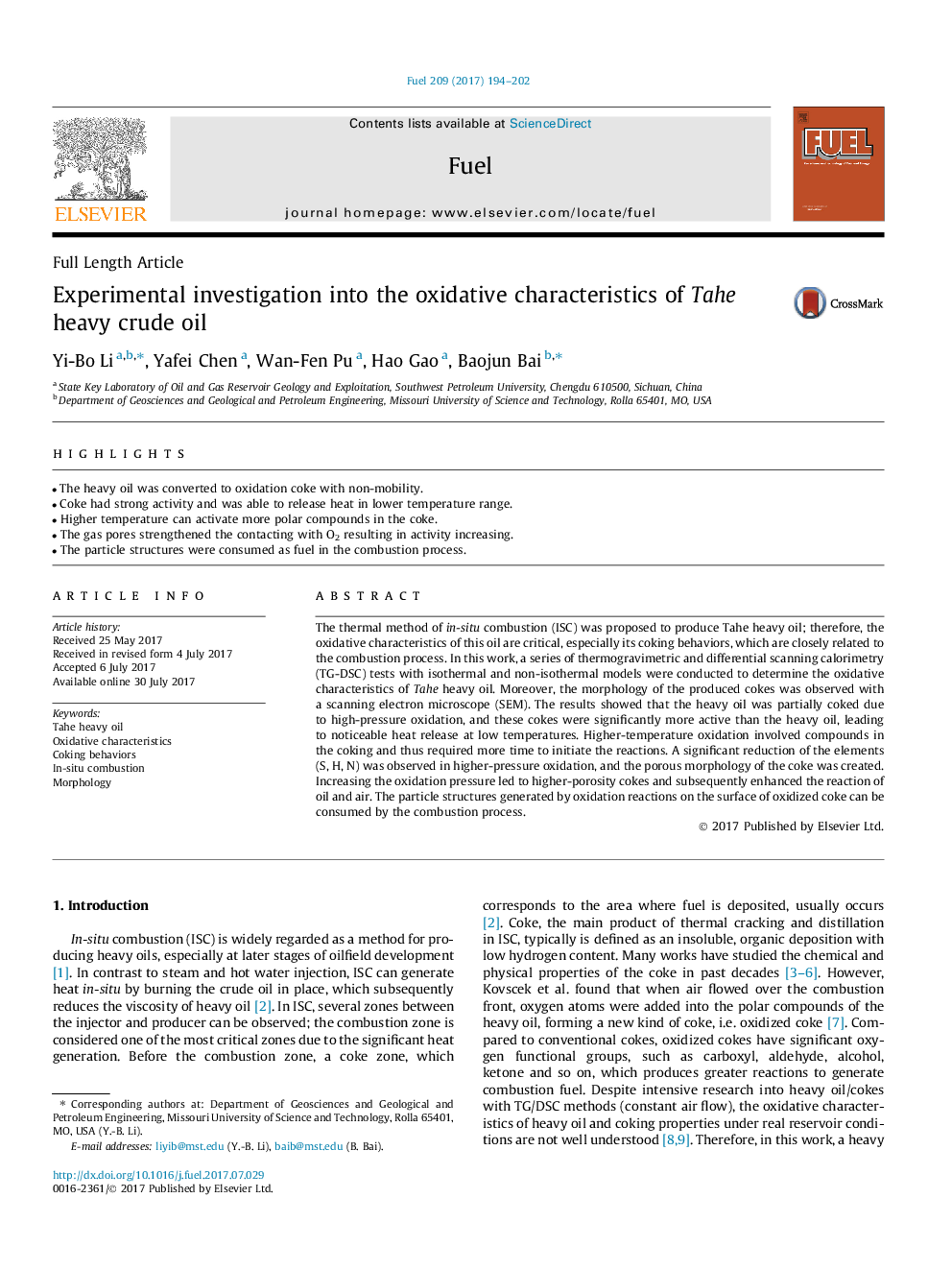| کد مقاله | کد نشریه | سال انتشار | مقاله انگلیسی | نسخه تمام متن |
|---|---|---|---|---|
| 6473846 | 1424955 | 2017 | 9 صفحه PDF | دانلود رایگان |
- The heavy oil was converted to oxidation coke with non-mobility.
- Coke had strong activity and was able to release heat in lower temperature range.
- Higher temperature can activate more polar compounds in the coke.
- The gas pores strengthened the contacting with O2 resulting in activity increasing.
- The particle structures were consumed as fuel in the combustion process.
The thermal method of in-situ combustion (ISC) was proposed to produce Tahe heavy oil; therefore, the oxidative characteristics of this oil are critical, especially its coking behaviors, which are closely related to the combustion process. In this work, a series of thermogravimetric and differential scanning calorimetry (TG-DSC) tests with isothermal and non-isothermal models were conducted to determine the oxidative characteristics of Tahe heavy oil. Moreover, the morphology of the produced cokes was observed with a scanning electron microscope (SEM). The results showed that the heavy oil was partially coked due to high-pressure oxidation, and these cokes were significantly more active than the heavy oil, leading to noticeable heat release at low temperatures. Higher-temperature oxidation involved compounds in the coking and thus required more time to initiate the reactions. A significant reduction of the elements (S, H, N) was observed in higher-pressure oxidation, and the porous morphology of the coke was created. Increasing the oxidation pressure led to higher-porosity cokes and subsequently enhanced the reaction of oil and air. The particle structures generated by oxidation reactions on the surface of oxidized coke can be consumed by the combustion process.
Journal: Fuel - Volume 209, 1 December 2017, Pages 194-202
